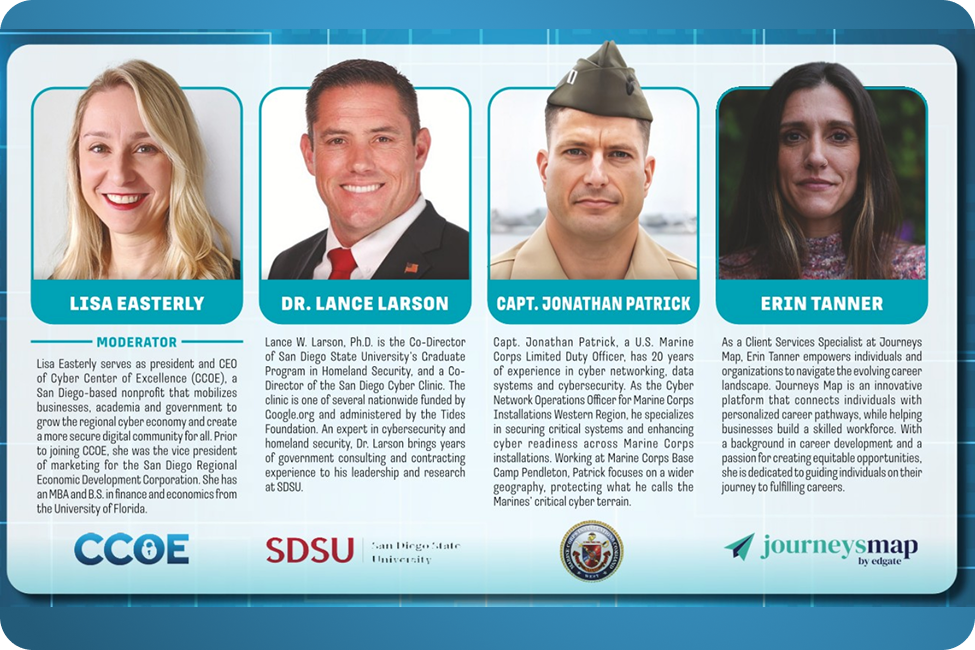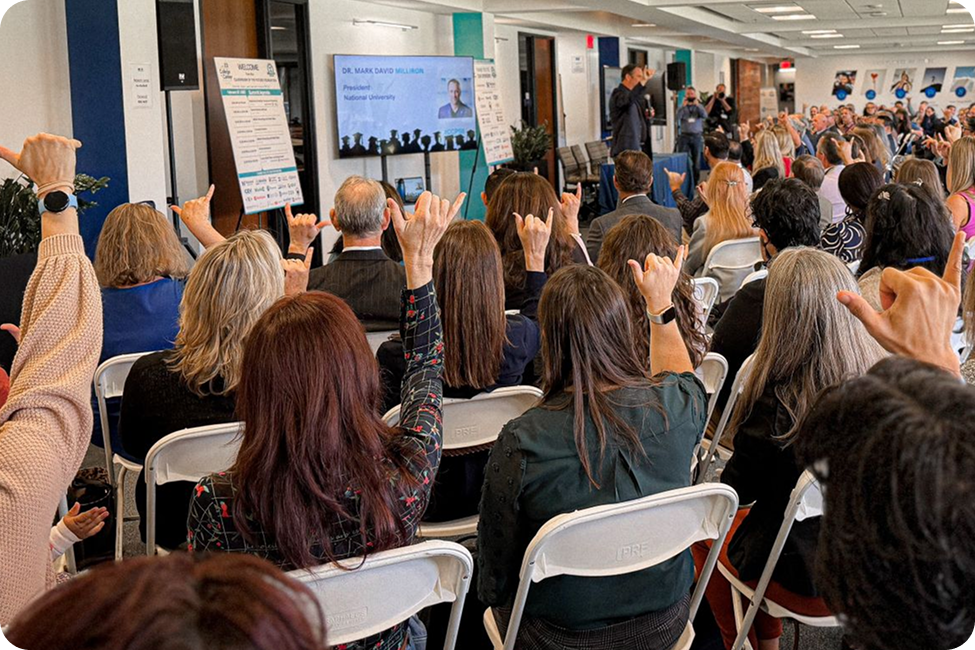The Growing Threat Landscape
Cybersecurity is no longer an IT concern; it’s a critical business imperative. FBI data reveals a staggering 150% increase in cybercrime complaints over the past five years, translating to $37 billion in losses. Couple this with IBM’s report of a $4.88 million average cost per data breach, and the financial implications become clear. Small and medium-sized businesses, the backbone of San Diego’s economy, are particularly vulnerable.
The Talent Crisis
The challenge is compounded by a severe talent shortage and the rapid evolution of required skills, driven by AI and other emerging technologies. With 457,000 cybersecurity job openings in the U.S. and 5,500 in San Diego alone (Cyberseek.org), organizations are struggling to build robust defenses. Moreover, only 14% of organizations are confident they have the necessary skills to meet cybersecurity objectives (WEF). As Journeys Map CEO, Peter Sibley notes, “It has never been more important for Cybersecurity employers to communicate the skills they need currently and as these needs change in the incredibly dynamic environment they operate. AI is literally changing everything.”
Panel Discussion Highlights
Key Insights:
- Skills Matching: The importance of skills matching to optimize existing talent pipelines.
- Strategic Workforce Development: Tanner advised organizations to develop strategic workforce plans to leverage untapped potential.
- Collaborative Partnerships: Journeys Map works with the military, educational institutions, and employers to create a diverse talent pool.
A recent CCOE panel, featuring industry leaders including one of our very own, Erin Tanner, Client Services Specialist at Journeys Map, Dr. Lance Larson, Co-Director of the Graduate Program in Homeland Security at SDSU and Co-Director of the San Diego Cyber Clinic, and Captain Jonathan Patrick, Cyber Network Operations Officer, Marine Corps Installations West, addressed these critical issues.
 |
Dr. Lance Larson’s Insights Dr. Larson brought his expertise on emerging threats and AI-driven cybersecurity to the forefront. He emphasized the urgency of proactive defensive strategies, particularly in light of AI’s potential to automate and amplify cyberattacks. “We need to put up those defensive strategies now,” Dr. Larson stated, highlighting the need for robust safeguards and countermeasures. |
 |
Captain Jonathan Patrick’s Perspective Captain Patrick provided a unique perspective, focusing on the challenges of securing legacy systems and the Marine Corps’ shift to a zero-trust architecture. He stressed the importance of adapting mindsets to the evolving cyber landscape. “We are moving towards zero-trust architecture and having that mindset of ‘Never trust, always verify’,” Captain Patrick explained, emphasizing the need for continuous verification of identities and devices. He also highlighted the importance of updated skill sets and cyber resiliency, noting that a security breach is “not a matter of if, it’s a matter of when.” |
 |
Journeys Map: Bridging the Talent Gap Erin Tanner highlighted Journeys Map’s role in addressing the talent shortage and the need for agile upskilling. Journeys Map’s platform is designed to translate employer skill needs to applicants and organizations, providing essential upskilling and connecting individuals with personalized career pathways, aligning their strengths and interests with in-demand cybersecurity roles. “We offer a sustainable, cost-effective solution,” Tanner explained, detailing Journeys Map’s Employer Recruitment Platform. This platform leverages intelligent landing pages, reverse skill matching, and comprehensive talent ecosystem management to build robust talent pipelines. As Peter states, “We are working to make 2025 a watershed year to grow a sustainable and agile cybersecurity talent pipeline.” |
The Journeys Impact:
Journeys Map’s approach enables organizations to build a resilient cybersecurity workforce, reducing time-to-hire and expanding access to skilled talent.
Optimize your cybersecurity talent pipeline. Schedule a Journeys Map demonstration to learn how. Schedule Your Demonstration today!
To delve deeper into the discussion and explore San Diego’s cybersecurity resources, listen to the full panel discussion.



